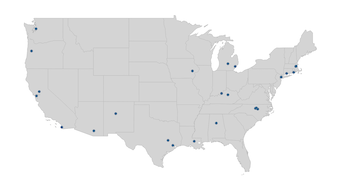Superfund Research Program
September 2022

Several SRP Centers have released press releases to share their new grants:
The NIEHS Superfund Research Program (SRP) welcomes 11 new and returning multiproject centers. These centers bring together teams of health and environmental science and engineering researchers to tackle complex problems related to hazardous substances. The centers also include community engagement, research translation, data science, and training components.
In this new grant cycle, returning SRP centers are:
Massachusetts Institute of Technology
University of California at Berkeley
Research teams from these centers will continue to make connections between hazardous substances and disease and develop new approaches to detect and reduce exposures to hazardous substances, including metals, per- and polyfluoroalkyl substances, polycyclic aromatic hydrocarbons, and volatile organic compounds (VOCs).
New centers bring fresh ideas and approaches to SRP:
- Researchers at Wayne State University, led by Melissa Runge-Morris, M.D., use plant tissues, sensors, and geospatial approaches to identify VOC hotspots. They monitor VOC levels in pregnant women and explore outcomes like preterm birth, while uncovering the underlying mechanisms using zebrafish.
- Yale University researchers, led by Vasilis Vasiliou, Ph.D., use molecular approaches and metabolomics to understand how 1,4 dioxane and co-occurring contaminants may contribute to liver cancer. They are developing chemical water treatment systems and a wireless sensor network for detecting and quantifying 1,4 dioxane.
- Building upon their NIH-funded Strong Heart Study in Native American populations, researchers at Columbia University, led by Ana Navas-Acien, Ph.D., determine the cardiometabolic effects of arsenic and uranium exposure. The team models contaminant levels, sources, and processes controlling their presence in drinking water in rural Native American communities and are developing novel filtration and water treatment systems to decrease exposure.


